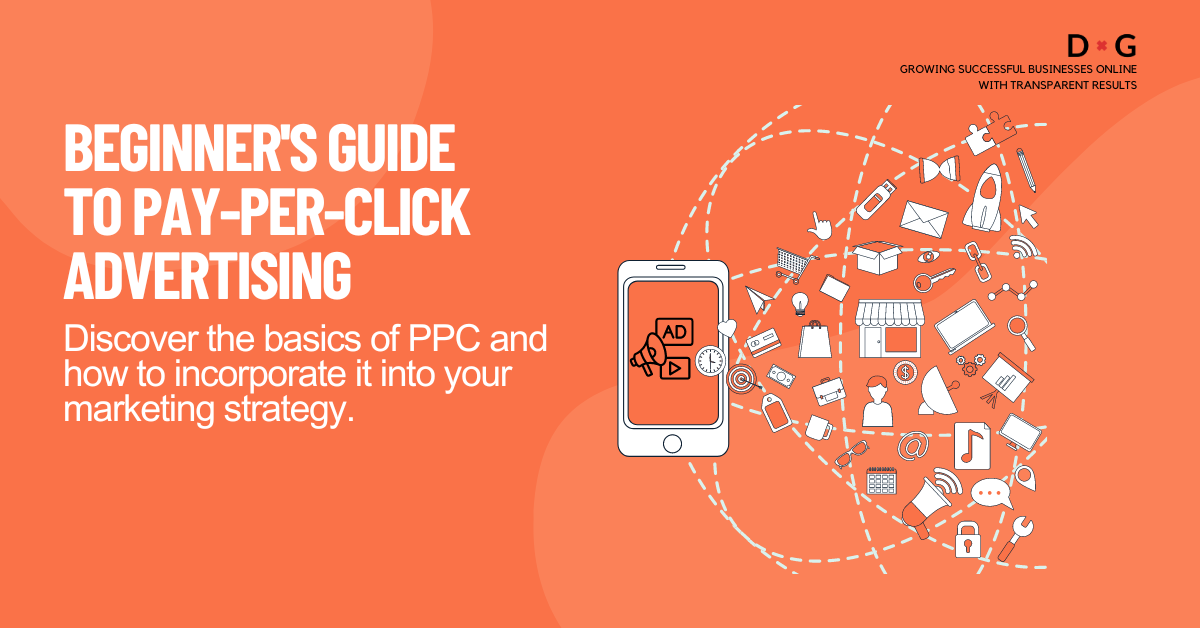
Getting your business noticed online can be challenging today. With the ever-increasing competition and the rapid evolution of digital marketing trends, it’s essential to have a solid strategy in place. One effective way to drive traffic to your website and boost sales is through Pay-Per-Click (PPC) advertising. Whether you’re just starting out in online marketing or looking for a straightforward explanation, this beginner’s guide to PPC advertising will give you a straightforward insight into how it works, why it is essential for every business, and how to leverage it effectively for growth.
What is Pay-Per-Click (PPC) Advertising?
PPC advertising is a digital marketing approach where business owners or advertisers pay a fee each time someone clicks on their ad. Essentially, you’re buying visits to your website rather than earning them organically through SEO.
How Does PPC Work?
When you create a PPC ad, it gets displayed on search engines or other websites based on the keywords you’ve selected. You incur a small charge each time someone clicks on your ad. This makes PPC a cost-effective way to target people who are actively searching for products or services like yours.
Common PPC Platforms
There are several popular platforms where you can run PPC ads, with Google Ads being the most well-known. Other major platforms include:
Benefits of Pay-Per-Click Advertising
PPC offers several advantages, especially for businesses looking to maximise their digital marketing efforts.
Targeted Audience
PPC allows you to show your ads to a specific audience based on factors such as keywords, demographics, and location. This targeting ensures that your ads are only seen by people who are likely to be interested in your offerings.
Cost Control
With PPC, you can set your own budget, controlling how much you spend each day. Since you only pay when someone clicks on your ad, you have more control over your ad spend.
Measurable Results
A major advantage of PPC advertising is its high level of measurability. You can track how many people saw your ad, clicked on it, and even made a purchase, allowing you to adjust your campaigns for better results.
Types of PPC Ads
There are various types of PPC ads to choose from, depending on your marketing goals and audience.
Search Ads
Search ads are shown at the top of search engine results when users enter specific keywords. They are highly effective for reaching people who are actively looking for a product or service.
Display Ads
Display ads are visual banners that show up on websites across the Google Display Network. These ads can increase brand awareness by displaying your business on popular sites.
Social Media Ads
Social media sites like Facebook, Instagram, and LinkedIn have their own PPC advertising features available. These types of ads can target users based on their interests, behaviors, and demographics, including their online activities.
Setting Up a PPC Campaign
Starting your first PPC campaign can seem daunting, but by following a few simple steps, you can set it up for success.
Choosing the Right Platform
Your choice of platform depends on where your audience spends most of their time. For instance, Google Ads might be a good option for reaching people who are actively searching, while Facebook Ads are great for engaging users based on interests.
Setting a Budget
Begin by establishing a daily or monthly budget for your campaign. PPC platforms let you control your spending by choosing how much you’re willing to pay for each click or conversion.
Selecting Keywords
Choosing the right keywords is essential for your PPC campaign’s success. Research the keywords that your audience is most likely to search for and target those in your ads.
Optimising Your PPC Campaign
Once your campaign is up and running, optimisation is key to getting the best results.
A/B Testing
Experiment with various ad versions to determine which ones deliver the best results. You can test headlines, images, or call-to-action phrases to determine what resonates with your audience.
Quality Score
In Google Ads, Quality Score is a measure of how relevant your ad is to the user’s search query. A higher Quality Score can result in reduced ad costs and improved ad placement.
Conversion Tracking
Utilise conversion tracking to assess how effective your ads are. This helps you understand how many clicks lead to sales or other desired actions, such as filling out a contact form.
Common Mistakes to Avoid in PPC Advertising
While PPC is a powerful tool, there are common mistakes that beginners often make.
Bidding on the Wrong Keywords
Choosing irrelevant or overly broad keywords can waste your budget quickly. Make sure your keywords are specific and aligned with your target audience.
Ignoring Mobile Users
With more people searching on mobile devices, it’s important to ensure your ads and landing pages are optimised for mobile users.
Poor Landing Page Design
Even if your ad is effective, a poorly designed landing page can drive users away. Make sure your landing pages are user-friendly, fast, and directly related to your ad.
Conclusion
Pay-Per-Click advertising is a powerful way for businesses to attract new customers and drive sales, even for beginners. By targeting the right audience, setting clear goals, and avoiding common pitfalls, you can make PPC work for your business.
Ready to dive deeper into digital marketing?
Check out our blog about TOF, MOF, and BOF in PPC Advertising for more tips about Paid Advertising.
